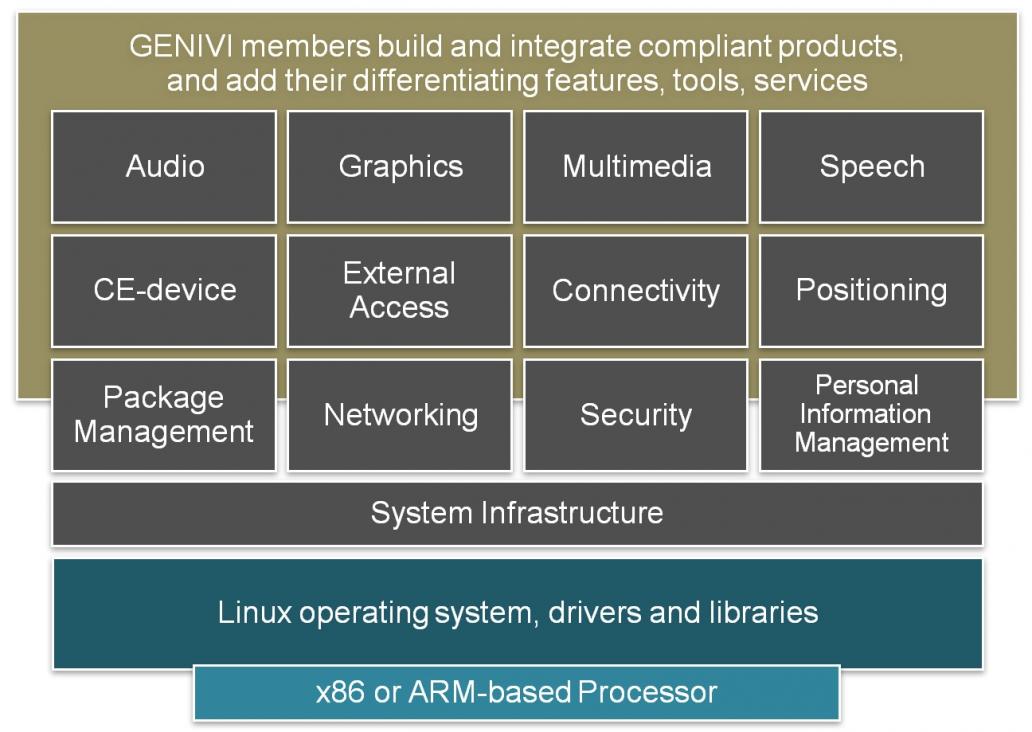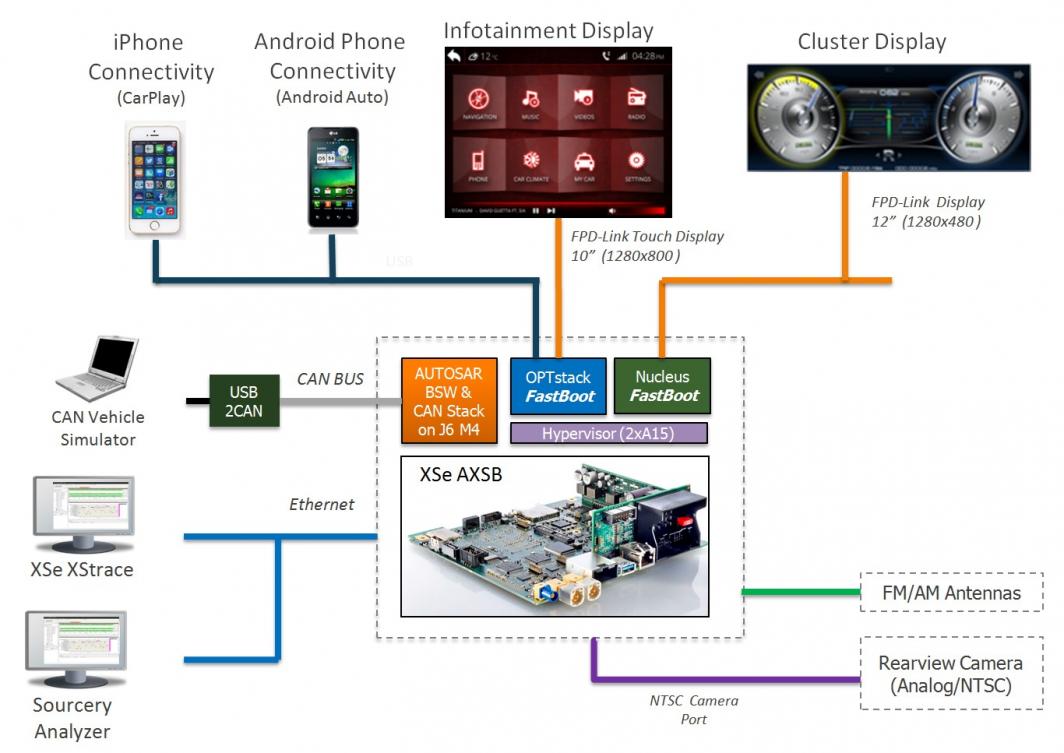These days, most of the innovative concepts in our cars are driven by electronics; not only infotainment systems, but also instrument clusters, safety systems including ADAS (Advanced Driver Assistance Systems), information displays, night vision, airbags, backup camera, stability control, and so on. The upcoming connected automobile ecosystem will provide the ultimate in automation and connectedness; your car can have all electronic components inside it connected with each other along with your smartphone and also with the outside world including the cloud and other cars. This kind of automation in connectivity of the automotive systems is possible only through the embedded software which is sitting on top of the smart SoCs employed in the electronic hardware of your vehicle.
In the near future, the software in a high-end vehicle can measure up to a hundred million lines of code. An interoperable and connected ecosystem of such a large software base in the vehicles can be best managed through an open standard where a large contribution from the open source developers around the world can be obtained. GENIVIis a non-profit consortium of automakers who contribute in building and sharing a Linux-based, in-vehicle infotainment (IVI) platform. Today, Linux has evolved as a network OS and is the most cost effective.

[GENIVI Software Architecture]
GENIVI’s aim is form a universal standard platform for all its members by ensuring compliance of open source middleware which can be freely shared among all. The members can add their own differentiation at the application level. Fordhas released its AppLink propriety source code and platform through GENIVI Alliance that complements the open source IVI platform with a proven framework to interact with smartphone and tablet applications. A car’s software can be upgraded just like an smartphone’s to keep it up-to-date for the long lifespan of the car. Of course, there is a larger need to address some of the specific issues such as security over the Controller Area Network (CAN).
As different types of electronics, for example, entertainment and safety get added into a vehicle, the complexity of hardware, software and connectivity grows because they have different levels of functionality and criticality. A high-end car today can have up to a hundred ECUs (Electronic Control Units). The processing required to manage such a large connected system requires a full-fledged automotive operating system; Linux with numerous capabilities in its middleware is promising to provide that level of OS support.

[Mentor’s hypervisor running on top of Mentor’s XSe AXSB hardware reference design]
Combining Linux with a safety certified RTOS on a hypervisor can enable a mixed-criticality single software platform and also reduce cost through module consolidation. In the above picture, MentorEmbedded Hypervisor is hosting two operating systems; the first is Mentor’s XSe OPTstack and XSe SuperBSP used for Linux based IVI systems, and the second is Mentor’s Nucleus RTOS to support safety systems. This is a proof-of-concept for bringing together a number of operating systems on a single platform to support multiple software applications with different levels of criticalities. For security, SELinux (Security Enhanced Linux) can be used for connected vehicles. The module consolidation is also assisted by standardization brought by AUTOSAR (Automotive Open System Architecture) consortium for various automotive software architectures.
Mentor’s Linux solution also brings XSe XStrace and Sourcery Analyzer into the fold that allow developers to look deep inside complex multi-core systems, see what’s happening in real time and troubleshoot like never before.
For a vehicle’s communication to outside world, there are V2V (Vehicle-to-Vehicle) and V2I (Vehicle-to-Infrastructure) technologies. V2V allows vehicles to communicate with each other using short-range radio exchanging data such as traffic congestion, weather condition, construction zones, and so on. It uses the unlicensed 5.9 GHz band which is used for Wi-Fitoo. Consortiums like GENIVI will need to ensure that V2V and V2I are also built around universal standards that are accepted throughout the automotive industry.
By using Mentor’s XSe AXSB reference board as a hardware platform along with the corresponding XSe OPTstack and XSe SuperBSP software platform, vehicle manufactures can start early development to effectively collaborate with Tier-1 supply chain.
An overview of Mentor’s Automotive Technology Platform which is based on GENIVI compliant Linux platform can be seen here. It’s also instrumented from kernel to graphics layer to deliver high performance graphics. As a Board Member of GENIVI, Mentor brings the experience necessary for the successful adoption of open source software by automotive tier-1 suppliers and OEMs.
The Automotive Technology Platform is available on the latest reference boards from Renesas, Texas Instruments, and Freescale. Mentor has an extensive partner network of software vendors, semiconductor companies and industry associations.
Share this post via:






Comments
There are no comments yet.
You must register or log in to view/post comments.